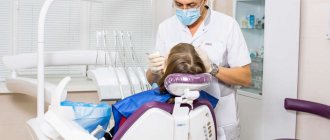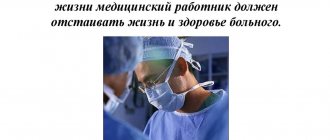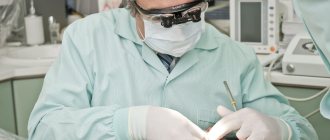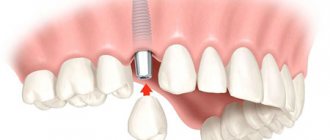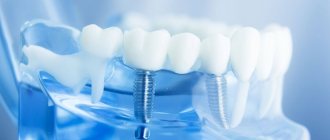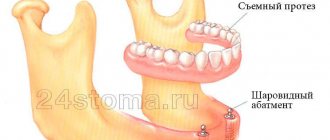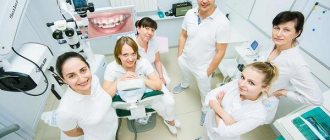Have questions?
Search for a doctor
Abrahamyan Narine Leonidovna Children's Dentist Make an appointment
Akimova Violetta Vadimovna Children's Dentist Make an appointment
Alpatskaya Ekaterina Olegovna Children's Dentist Make an appointment
Akhtyamova Dilyara Amirkhanovna Children's dentist. Head of the dental department in pediatric dentistry on Volgogradsky Prospekt Make an appointment
Belousova Tatyana Gennadievna Children's Dentist Make an appointment
Berezina Lyudmila Sergeevna Dentist-therapist, periodontist Make an appointment
Berezinskaya Anna Sergeevna Dentist-therapist, periodontist, doctor of the highest category Make an appointment
Bogdanova Daria Alekseevna Children's Dentist Make an appointment
Bryzgalova (Selezneva) Irina Andreevna Children's dentist Make an appointment
Vereshchaka Denis Nikolaevich Dentist-therapist, periodontist Make an appointment
Vorontsova Elena Anatolyevna Children's Dentist Make an appointment
Gaidukova Valentina Vladimirovna Dentist-therapist Make an appointment
Gasanova Zaira Romanovna Dentist-therapist, periodontist Make an appointment
Dzhansueva Alina Smailovna Children's Dentist Make an appointment
Dzgoeva Ilona Vasilievna Dentist-therapist Make an appointment
Dobrina Daria Evgenievna Pediatric dentist Make an appointment
Zhukova Irina Petrovna Dentist-therapist, periodontist Make an appointment
Ievleva Liliya Nikolaevna Dentist-therapist, periodontist Make an appointment
Kadieva Niyat Mukailovna Dentist-therapist, periodontist. Head of the dental department at SM-Clinic on the street. Yaroslavskaya Make an appointment
Karpova Vera Yurievna Dentist-therapist Make an appointment
Klimova Ksenia Evgenievna Dentist-therapist, periodontist Make an appointment
Kornilova Yulia Olegovna Pediatric dentist, dental surgeon, doctor of the second category Make an appointment
Kochieva Zamira Anatolyevna Dentist-therapist, periodontist Make an appointment
Koshevaya (Brazhnikova) Natalia Ruslanovna Dentist-therapist Make an appointment
Kuzina Ekaterina Viktorovna Children's dentist. Deputy Chief Physician for Pediatric Dentistry Make an appointment
Kuznetsova Elena Viktorovna Dentist-therapist, pediatric dentist, doctor of the first category Make an appointment
Lavrova Irina Vladimirovna Dentist-therapist Make an appointment
Lanyuk Natalya Sergeevna Pediatric dentist Make an appointment
Lukyanova Anna Viktorovna Children's Dentist Make an appointment
Lysenkov Pavel Alekseevich Dentist-therapist Make an appointment
Magomedov Nazir Gafurovich Dentist-therapist Make an appointment
Mambetova Lina Sergeevna Children's Dentist Make an appointment
Martynova Elena Yurievna Dentist-therapist, periodontist, doctor of the highest medical category, Ph.D. Make an appointment
Mirzoyan Emma Vageevna Children's dentist. Head of the department at Dentistry “SM-Doctor” on the street. Cosmonaut Volkov Make an appointment
Morozov Kirill Aleksandrovich Dentist-therapist Make an appointment
Myshkin Daniil Geroldovich Dentist-therapist Make an appointment
Nesterova Anastasia Sergeevna Dentist-therapist Make an appointment
Novikova Yulia Vitalievna Dentist-therapist Make an appointment
Petrova (Shcherbakova) Ksenia Aleksandrovna Children's Dentist Make an appointment
Petrova Maria Aleksandrovna Children's dentist, pediatric dentist-surgeon Make an appointment
Petrosyan Ani Muradovna Children's Dentist Make an appointment
Petrosyan Anna Evgenievna Children's Dentist Make an appointment
Romanova Elizaveta Aleksandrovna Dentist-therapist, periodontist Make an appointment
Rostovenko Inna Ivanovna Dentist-therapist, periodontist, dental surgeon, head of the dental department Make an appointment
Safina Milana Alekseevna Dentist-therapist Make an appointment
Seregina Irina Viktorovna Dentist-therapist, periodontist Make an appointment
Sozinova Arina Yurievna Dentist-therapist Make an appointment
Tutubalina Karina Geroldovna Children's Dentist Make an appointment
Tyuryakova Natalya Aleksandrovna Dentist-therapist, periodontist Make an appointment
Urigaeva Sofya Revazovna Children's Dentist Make an appointment
Hilo Elina Alievna Dentist-therapist Make an appointment
Khorunzhiy Tatyana Dmitrievna Children's dentist Make an appointment
Tsanava Tamari Zaurievna Dentist-therapist, periodontist Make an appointment
Cherednichenko Victoria Aleksandrovna Dentist-therapist, periodontist. Head of the dental department at SM-Dentistry on the street. Yartsevskaya Make an appointment
Cherkashina (Garusova) Galina Aleksandrovna Dentist-therapist, dental surgeon Make an appointment
Chechenova Aminat Nazirovna Children's Dentist Make an appointment
Shemyakina Lyudmila Evgenievna Dentist-therapist, pediatric dentist. Head of the children's dental department at SM-Dentistry on the street. Yartsevskaya Make an appointment
Shirinyan Kristina Aleksandrovna Dentist-therapist Make an appointment
Yurchenko Natalya Viktorovna Dentist-therapist, periodontist, orthodontist, candidate of medical sciences, head of the dental department Make an appointment
We can say that a dental therapist is the first line of defense for the health of your teeth. The therapist conducts an initial examination of the oral cavity, identifies the main problems and outlines ways to solve them. If necessary, he will refer you to more specialized specialists - a surgeon, orthodontist, etc.
Who is this?
A dentist-therapist is a general practitioner.
Functional responsibilities include the initial examination of the patient and diagnosis. Therapists are also able to classify the diseases of patients who are referred to them for direct help.
Such workers can expertly treat many oral diseases.
The most important functional responsibility of such a specialist is the treatment of caries and the presence of possible complications.
Signs of a good specialist
Dental therapists see patients in thousands of specialized clinics. To make the right choice, you should know what criteria a good specialist must meet:
- positive professional reputation and good reviews from patients;
- extensive practical experience;
- friendly attitude towards patients.
- availability of specialized medical education confirmed by a diploma;
- certificates of completion of advanced training courses.
The desire to improve one’s professionalism, study new methods of treating oral diseases, as well as an individual approach to each patient is what makes a dental therapist a good specialist.
What are its functions and responsibilities?
A professional in the specialty in question deals with all issues related to dental problems. The issues of treatment of caries, pulpitis, and periodontal disease are fully resolved.
He also provides consultations on the prevention of all diseases listed above.
Such medical workers examine the patient who contacts them and, if such a need arises, refer the person for examination to doctors of related fields.
The main responsibility of such a professional is the treatment of caries and all possible complications.
These include:
- pulpitis, which is an inflammatory process in the nerves of the teeth, occurs against a background of constant pain, with pressure the pain becomes stronger, in addition, doctors are responsible for filling the canal and eliminating injured nerve endings;
- periodontitis, which are inflammatory processes around the dental tissues, which results in the destruction of all the ligaments that connect the tooth to the place of attachment to the gum and protect it from falling out; such conditions can be the result of caries in the most advanced form, as well as injuries received;
- Periostitis, which is an inflammatory process in the area of the periosteum, called flux, often manifests itself due to infection, is observed in the case of the development of an advanced form of pulpitis or periodontitis, therapeutic procedures include pumping out purulent masses and eliminating affected teeth.
What diseases does it treat?
Consultative assistance from specialists in this profile is required in almost any situation when there are some problems with the teeth and jaw. However, there are a number of diseases that are treated exclusively in the dental therapy department, since they do not require surgical or orthodontic intervention. Among these diseases, the most popular ones should be highlighted:
Treatment of caries by a dentist - before and after photos
- Caries . A problem familiar to everyone, which is characterized by the irreversible destruction of dental tissue by dangerous bacteria. It often occurs without pain, but has dangerous consequences and side effects.
- Pulpitis . It consists of inflammation of the dental nerve, and develops against the background of the impact of caries infection on soft tissues. It is characterized by aching, severe pain that increases with pressure. Sometimes the first stages pass without symptoms.
- Periodontitis . Destruction of soft tissue between a human tooth and the alveolar process. There is a traumatic option and consequences of caries: in this case, treatment usually takes a long period.
- Periostitis . It is also a classic flux. Inflammation of the soft tissues of the periosteal region. It often occurs when the wrong choice of medications is used in the treatment of pulpitis or periodontitis. The pus is removed, sometimes leading to tooth extraction.
Doctor's tasks
Typical tasks of a physician in the specialty in question include the following:
- Dental treatment, which involves eliminating carious cavities.
- Removal of nerves exposed to the inflammatory process.
- Restorative procedures affecting areas of tooth enamel, in particular for damaged teeth; his responsibilities also include teeth whitening.
- One of the most important tasks of this medical professional is to perform a depulpation procedure, which includes extracting the damaged nerve, as well as preserving the lining of the dentition.
Treatment of caries and all possible complications is the main task of this medical professional.
They are dangerous to the patient’s health, and the tasks of a professional in this particular area include eliminating such possible consequences.
How are you connected to other doctors?
The connection between the dentist-therapist and doctors of similar specialties is very direct. It is impossible to imagine working without contacting orthopedists.
They provide the production of dentures of specified characteristics, as well as assistance in cases of disruption of normal chewing function.
It is orthopedists who help all people create a beautiful smile, as well as restore chewing functions in case of tooth loss.
It is the therapists who refer their patients to orthopedists when such a need arises.
It is ensured that diagnostic measures are carried out in the oral cavity, as well as the identification of all emerging damage.
Orthopedic prostheses are made both removable and non-removable. These include bridges, crowns, dental implants and other means of restoring the integrity of the oral cavity.
A related profession to the one under consideration is the work of a surgeon. Unlike therapists, surgeons remove diseased teeth.
Therapeutic dentists refer their patients to surgeons if it is necessary to remove a diseased tooth or several of them.
This happens when a tooth is severely damaged, when its preservation and further activities are no longer possible.
It is also possible to carry out implantation of dentures, crowns and other dental care products. Surgeons are also responsible for removing wisdom teeth that are growing incorrectly.
Such diagnoses are made directly by the therapist during the initial examination of the patient who contacts him.
What does it treat?
A professional in this specialty treats a wide variety of diseases and pathologies of the oral area.
In particular, it is strongly recommended to contact such a specialist in the following cases:
- with bleeding gums, if blood appears on the gums while brushing your teeth, this is a direct sign of emerging problems with the gum tissue;
- with acute, aching pain in the oral cavity, in such situations it is possible to develop inflammatory processes in the mouth, as well as possible pathologies in this area;
- when tumors form on the gums and around the oral cavity, in such cases we can talk about the formation of an abscess and the need to visit a dentist;
- in case of injury to the oral cavity and mechanical damage to the gums;
- in case of traumatic damage to the dentition;
- in case of white and yellow stains on the tooth enamel, as well as other defects in the external cosmetic appearance of the dentition;
- if you have bad breath;
- in case of development of glossitis in any available final variety;
- if you have high tooth sensitivity, especially when alternating between eating foods at different temperatures;
- for irritation of the oral mucosa, which is the result of the development of stomatitis and other diseases of the oral area.
Preventive measures
For oral health, it is necessary, first of all, to regularly prevent caries. This consists of high-quality teeth cleaning with toothpaste, floss and other means. A proper diet and constant consultations/examinations with a doctor are necessary.
Some cases of caries can develop without symptoms, and can only be detected with certain examinations. This allows you to stop the development of a destructive disease and postpone the removal and drilling of infected tissue for some time!
What symptoms do you see a doctor for?
It is recommended to visit a specialist in the following cases:
- with increased bleeding gums. The appearance of blood while brushing your teeth is a sure sign of problems with the gum tissue;
- sharp, dull pain in the mouth. Any pain signals the progress of the inflammatory process. In this case, it is necessary to stop the course of the pathology and cope with the disease;
- swelling of gums, cheeks. Indicates an abscess, urgent dental intervention is necessary;
- mechanical damage to the tooth, cosmetic defects;
- the appearance of white/dark spots of unknown etiology on the enamel;
- bad breath;
- glossitis;
- bruxism;
- increased sensitivity of teeth;
- damage to the mucous membranes of the mouth, covering them with a characteristic coating. Symptoms may indicate the course of stomatitis and other dental diseases.
This is interesting: Is it possible to put analgin on a sore tooth: treatment rules
Important! You need to visit the dentist once every six months and have your teeth professionally cleaned. The procedure provides a feeling of cleanliness for a long time; with the help of a laser, accumulated dental plaque is removed, along with pathogenic microorganisms, and bad breath.
Cost of services
As a rule, in clinics under state jurisdiction the services of such a specialist are free. Private dental structures create a specific structure for visiting specialists and a subsequent payment scheme for their services.
On your first visit, a predetermined fee will be charged; all subsequent visits are free of charge.
A certain amount of the established amount is determined by the qualifications of the medical specialist, as well as his total work experience in a particular specialty.
The initial cost of visiting a therapist in the field of dentistry is determined in the range from 250 rubles to several thousand for the first visit, depending on the parameters listed above.
An additional fee is established for the use of medical diagnostic equipment, performing various manipulations and installing all kinds of dental structures.
It is not recommended to save on your own health, since in the end it is not cheap. As dental problems develop, they become destroyed and treatment by a specialist will be expensive.
If you seek help from a dental therapist exactly at the appointed time, all problems will be solved and the health of your teeth and oral cavity will be ensured.
Dentist therapist
Over time, three areas have emerged in dentistry - therapeutic, surgical, and orthopedic . Later, the first began to be divided into the following types:
- Diagnosis of oral diseases.
- Prevention.
- Treatment of diseases of the mucous membrane.
- Periodontology.
- Children's dentistry.
However, the listed specializations are only a theory; in practice, one dental therapist is sufficient, who has the knowledge and practical skills to provide assistance to patients with diseases of the periodontium, mucous membrane, tongue, lips and others. To be precise, there is no difference between a dentist and a dental therapist . A dental therapist treats diseases of the oral cavity, like other specialists.
The main purpose of the dental therapist specialty is the prevention and treatment of caries with its complications. This dentist has a wider range of knowledge within the profession, in contrast to the dental surgeon and orthodontist. The specialization of a dental therapist involves the prevention and treatment of diseases related to the oral cavity. Some dentists have narrower specializations that expand their field of activity, for example, endontium is responsible for the internal condition of the tooth and its root canals. The dentist, in addition to caries, also treats other pathological conditions of tooth enamel:
- Wedge-shaped defect.
- Increased abrasion of enamel.
- Fluorosis.
- Hypoplasia.
- Disturbance in the shape and color of teeth.
Beauty services
Today, some dental technologies that are aimed at improving the aesthetic condition of the teeth and oral cavity belong to a separate area - cosmetic dentistry. The list of their services includes, for example, the following procedures:
- Bleaching.
- Restoration of teeth using composite materials with light-curing properties.
- Fixing various decorations on enamel.
This is not the entire list of services that can be obtained these days. This list of cosmetic dentistry also includes the fight against halitosis - bad breath. Based on this, we can conclude that dental therapists are welcome employees of many large cosmetology clinics, who are valued no less than cosmetologists and plastic surgeons.
Who instead of a periodontist?
Moreover, a dental therapist is able to do the work of a periodontist , treating periodontal disease and gums, if he is not on the staff of a medical institution. The dentist will remove dental plaque, carry out anti-inflammatory measures, and provide other types of assistance. This doctor will also cure cheilitis - diseases of the lips, glossitis - tongue, and help get rid of the pathology of the salivary glands.
Approximately 1% of all activities of a dentist are involved in the treatment of pathologies of the oral mucosa. Particularly important is the diagnosis of precancer and malignant neoplasms.
Non-carious dental diseases
A dentist-therapist treats:
- Hypoplasia of tooth enamel - insufficient development of enamel, which is associated with insufficient mineralization of tooth tissue. It may be a congenital pathology or a consequence of certain childhood diseases. With this pathology, various depressions, grooves and dull spots are visible on the surface of the tooth.
- Fluorosis is a chronic endemic disease that develops due to excess fluoride in drinking water. The pathology is formed before teething and is manifested by enamel defects, which may differ in shape, size and color.
- A wedge-shaped defect, which usually affects the cervical part of the front teeth. This lesion of enamel and dentin is shaped like a wedge. The size of the defect varies from minor damage to the enamel to chipping of the coronal part. The cause of this pathology has not been fully established.
- Pathological abrasion of teeth, in which the surface relief of the tooth is smoothed and its crown part is gradually ground down. The development of this pathology is observed with malocclusion, impaired metabolism and exposure to harmful factors. With such dental damage, caries does not form, but the bite and shape of the face change.
- Necrosis of hard dental tissues, which develops when damaged by acids and alkalis. The lesion affects the entire surface of the tooth.
- Dental hyperesthesia – gradually increasing sensitivity to various stimuli (temperature, etc.).
- Erosion of tooth enamel is a dull spot or defect of various shapes, which is located in the hard tissues of the tooth and, with further development, affects part of the dentin. It can develop due to mechanical damage, endocrine diseases, etc.
- Dental injuries (bruise, crack, tooth dislocation, crown or root fracture, damage to the tooth germ). Injuries can manifest as pain, mobility or change in tooth position, impaired chewing function, etc.
Caries and its complications
The scope of activity of a dentist-therapist includes dental diseases such as:
- Caries is a common lesion in which, as a result of the destruction of the enamel and dentin of the tooth, a cavity is formed on its surface. It manifests itself as pain when eating and exposure to temperature.
- Pulpitis is an inflammatory process affecting the loose fibrous connective tissue of the tooth, which, in addition to tissue cells, contains blood vessels and a nerve. The disease in most cases is a consequence of caries, but can also develop under the influence of chemicals or as a complication of surgical interventions and poor-quality dental fillings. It can be acute or chronic, accompanied by severe periodic pain.
- Periodontitis is an inflammatory process localized in the tissues adjacent to the tooth root. With this pathology, the integrity of the ligaments that hold the tooth in the alveolus is disrupted, and bone tissue degradation occurs. The disease can be infectious (a complication of caries), traumatic and drug-induced, and is manifested by general malaise, pain in the affected tooth when pressed and swelling of the surrounding tissues.
- Periostitis (flux) is an inflammation of the periosteum that develops as a result of pulpitis, periodontitis or trauma. Accompanied by acute pain, swelling of the gums, development of an abscess and swelling of the lips and cheeks on the affected side.
This is interesting: Plaque on teeth - what to do and how to remove: removal at home and at the dentist
Diseases of the oral mucosa
The dentist-therapist treats:
- Stomatitis (traumatic, symptomatic, infectious and specific). These inflammatory diseases of the mucous membrane can be catarrhal, ulcerative and aphthous. They are manifested by swelling of the mucous membrane, the appearance of plaque, erosions or ulcers, soreness and bleeding of the gums, and bad breath. With the ulcerative and aphthous form, general malaise and fever are observed.
- Cheilitis is a lesion of the lips, in which a red border forms on the closure line, and the lips themselves turn pale, swell and crack. It can be catarrhal, eczematous, candidal, glandular and exfoliative.
- Glossitis is an inflammation of the tongue that develops when it is injured, exposed to pathogenic microorganisms, or as a symptom of another disease. It manifests itself as a change in the color of the tongue, difficulties with speech, chewing and swallowing.
This specialist also removes tartar and dental plaque.
Safety precautions during therapeutic treatment
Licensed dental clinics with certificates of conformity must provide a 100% quality guarantee and use only modern equipment for diagnostics and therapeutic treatment. Before you book your treatment after consultation, please pay attention to the following details:
- The clinic must have certificates and a license that allows it to operate within the framework of the legislation of the Russian Federation.
- Compliance with regulations in the workplace is a serious consideration. All instruments must be clean and placed in a disinfectant solution, gowns and masks must also be washed before each procedure. The workplace must be in complete order.
- Before treatment begins, a contract is concluded indicating complete information about the clinic and the client. It indicates the diagnosis, number and cost of procedures. Only a contract guarantees the fulfillment of all obligations on the part of dentistry and the client.
- Specialists must use clean masks and gowns, gloves, and shoe covers. The pleasant appearance of dental workers is an important factor that shows their accuracy and responsibility.
The CELT dental clinic provides a guarantee, has a license, enters into an agreement and uses only imported equipment of excellent quality.
When to contact a dentist
Consultation with a dental therapist is necessary for people who:
- suffer from pain when teeth come into contact with cold or hot drinks or food;
- noted a change in the shade of tooth enamel;
- notice the appearance of whitish spots or stripes on the teeth;
- feel pain when biting food;
- experience pain when eating sweet or sour foods;
- notice swelling of the gums or their redness;
- complain of bleeding gums and bad breath;
- note that the teeth have become mobile.
Our diagnostic base
In order to choose the right treatment method, you must first make a correct diagnosis. And this requires modern equipment that allows for full-fledged research.
Our dental therapists have a dental computer visiograph at their disposal, thanks to which they receive high-quality images of the diseased tooth. The presence of a computed tomograph allows one to study the individual characteristics of the structure of teeth, their canals and roots. Orthopantomograph images provide information about the condition of the periodontium and dental tissue of the entire dentofacial system.
How to prepare for your visit
Before going to the doctor, you need to thoroughly clean your mouth and stop drinking alcohol, at least for a few days. Have a hearty lunch, in case the doctor performs some manipulations, after which it is forbidden to eat. Be sure to stop taking painkillers; drugs most often blur the clinical picture and make it difficult to make a correct diagnosis.
Don’t be afraid to tell the doctor all your feelings and complaints. Only by reliably knowing all aspects of the problem can you effectively deal with it. Do not forget to mention the presence of allergies to any medications, the course of chronic infectious diseases. Based on a survey and external examination, the dentist will make a preliminary diagnosis and suggest a further plan of action.
Examination and consultation with a dentist at the Profident clinic
At the PROFI-Dent dental clinic, consultations are conducted by doctors of all specialties, which makes it possible to take a comprehensive approach to the development of treatment plans.
The latest technologies and developments in the field of diagnosis and treatment of dental problems are at your service:
- X-ray diagnostics;
- Digital visiograph and orthopantomograph;
- Ultrasound and laser systems;
- Advanced treatment protocols;
- New generation materials and preparations.
The dentist will conduct a full diagnosis, identify the problem and, if necessary, refer the patient to a specialist. And a flexible pricing policy makes it possible to make the cost of a dental consultation affordable for any patient.
How does an appointment with a therapist work?
What should a therapist know about a patient? First of all, the symptoms and complaints that bother him.
To do this, he asks leading questions:
- when did blood pressure first change?
- additional symptoms present;
- presence of additional diseases, chronic;
- lifestyle, daily routine;
- physical exercise;
- is hereditary transmission of the disease possible;
- other risk factors;
- How is your sex life going and how often do you change partners?
Based on the answers, the specialist can draw up a clinical picture of the disease and proceed to a medical examination.
By what criteria do you choose a specialist?
It is recommended to take into account some factors by which the selection of the necessary physician is carried out:
- The total length of work experience in a given specific area of work.
- Recommendations from colleagues or related workers.
- A general list of operations that a physician of the profile in question can perform.
- Features of the specialized education received at the university.
- Characteristics of patients who have previously used the services of this particular physician.
- The cost of services provided by the agreed upon professional.
- The order of operations that a doctor of this profile intends to perform.
- Place of reception of an employee of a similar professional background.
Do you want to know how to properly do speech therapy massage for children at home? Then we recommend following the link and reading the article. You can read how many days you can keep arsenic in an adult’s tooth here.
You can find out how to treat tonsillitis in adults at home with medications by following the link.
Only comprehensive consideration of all the above factors can be a reliable guarantee of the correct choice of specialist.
The main criterion is certainly the quality of the services they provide and the speed of all operations.
Diagnostic manipulations in the dentist's office
At the first visit, the dentist collects a general and special history. Determines the presence of concomitant diseases, chronic pathologies, allergic reactions. Then he analyzes the complaints and determines the estimated time of onset of the disease.
What is the competence of a dental therapist:
- examination of the oral cavity using a mirror and an angled probe;
- general examination to identify jaw asymmetry, enlarged submandibular lymph nodes;
- analysis of the condition of the gums - bleeding, formation of a periodontal pocket, exposure of the neck and root part.
During diagnosis, palpation and percussion methods (tapping on the crown) are used. Private offices use innovative techniques to examine patients. A fluorescent lamp allows you to detect hidden forms of caries, invisible damage at the initial stage. Thermal testing reveals nerve sensitivity. Dentistry visualizes the oral cavity in great detail.
According to indications, the therapist takes a photo. Modern dental clinics are equipped with computer devices, analogues of X-ray machines. The patient is given a targeted image using a radiovisiograph (portable or stationary).
If necessary, the dentist gives a referral for an x-ray, 3D image, orthopantomogram (panoramic photo), computed tomography.
This is interesting: Black plaque on a child’s teeth: reasons for how to get rid of plaque Prisley
Diagnostic and treatment methods
Any appointment with a doctor begins with an examination. First of all, a specialist needs to recognize the symptoms of the disease. For this purpose, he interviews the patient and conducts a diagnostic study. This can be done in several ways:
- Computed tomography, targeted X-ray and orthopantonogram. These are types of x-ray examinations; they are one of the most common and reliable methods for detecting pathology. A dentist uses x-rays every day in his practice. Thanks to an accurate image, the dentist can see hidden inflammatory processes, find out the size of the tooth roots and the quality of the fillings.
- Electrodiagnostics. This procedure is aimed at determining the sensitivity reaction of the nerve receptors of the pulp by exposing them to electric current. This technique allows you to obtain information about the presence of infection inside the tooth.
- Visual inspection. Using special dental instruments, the therapist examines the patient’s oral cavity, assesses the condition of the mucous membrane and dental units.
Comprehensive diagnostics helps not only to identify pathology, but also to find out the reasons for its formation. After making a diagnosis, the dentist can begin to draw up a treatment plan. If the patient has been diagnosed with caries at an early stage, restoration of the damaged tooth occurs through remineralization of the enamel. For deeper damage to the surface of the unit, treatment of the tooth cavity and filling are required. This specialist also deals with the elimination of diseases such as pulpitis and periodontitis. To do this, he removes root canals, installs temporary fillings and uses other therapeutic manipulations.
Treatment procedures in the therapist's office
Common procedures in the dentist's office:
- treatment of caries - opening, cleaning, treating the carious cavity, filling;
- endodontics – cleaning, filling of root canals;
- depulpation - removal of the nerve;
- procedure for eliminating sensitivity of tooth enamel;
- fluoridation of teeth - saturation of enamel with fluoride;
- whitening;
- professional cleaning - use of special paste, ultrasound, Air Flow technology.
The latest (gentle) methods of painless treatment of caries with minimal mechanical damage to the tooth are increasingly being used - infiltration (ICON), air abrasive treatment, ozone therapy, laser, ART technique.
A therapeutic dentist performs simple crown restoration, with the exception of aesthetic dentistry techniques such as the installation of ceramic or composite veneers.
Which specialists does the therapist refer to if there is a suspicion of vascular disease?
Based on the indications, the therapist can refer the patient to another specialist who will manage the patient.
List of doctors who can help with vascular diseases:
- A cardiologist treats problems of the heart and blood vessels. When contacting him, you must have the results of your cardiogram and ECHO with you. Based on the results, he will be able to prescribe treatment.
- Neuropathologist. This specialist studies intracranial pressure. To visit him, you will need to diagnose cerebral vessels using angiography. The examination may continue and additional procedures may need to be performed.
- Endocrinologist. Those who have problems with the thyroid gland or elevated sugar levels will have to go to this specialist. A detailed blood test and hormones are prescribed. Based on the identified data, the specialist will find the cause of the violations and advise on treatment.
- Nephrologist. When there is increased blood pressure, but the heart vessels are normal, then there is a problem with kidney failure. The patient is prescribed urine and blood tests, and ultrasound diagnostics of the kidneys. Disruptions in blood circulation will be identified based on testing indicators.
Problems with blood vessels can hide a very serious pathology. Late treatment is fraught with consequences.
In such cases, even surgical intervention does not guarantee a complete recovery.
What may be additionally required?
To correctly determine the diagnosis, the patient may be prescribed various additional procedures, studies and tests:
- swab of the oral mucosa for bacteria and fungi;
- radiography using modern digital equipment;
- microscopy;
- electroodontic diagnostics to assess the condition of the pulp (nerve).
During the examination, the doctor may use instruments to open the crowns and examine the condition of the tissues inside the tooth and the condition of the nerves inside the root.
Children's dentistry
A dentist in a children's office sets himself the task of helping the child's body form a correct bite and a healthy, beautiful smile. In many cases, specialists see no point in treating baby teeth that hurt, and then surgery comes to the rescue.
If it is possible to restore a tooth destroyed by caries, then you can use classical filling technology. Baby teeth will soon fall out on their own, and there is no point in creating long-lasting dentures, but temporary filling of baby teeth allows you to restore chewing function for the next few years before the permanent ones grow in.
To work with children in Moscow, colored filling material is often used, which will be very interesting for kids. Bright colors, which can be used to place fillings, are safe for health, will not harm your child, and cheer up your child!
Colored fillings for baby teeth
If the child is afraid of treatment, then it is acceptable to use nitrous oxide or even general anesthesia for difficult situations. This will help make the process simpler and more convenient, and will also have a beneficial effect on the baby’s psychological state.
Teenagers may need help with tooth growth to create straight teeth. The dental therapist does not undertake teeth straightening and can only refer the patient for further observation and procedures at the orthodontist. However, during the process of alignment and wearing braces, it is still necessary to regularly monitor and consult with a specialist in the therapy room.
What does a dental consultation in Moscow include?
An initial visit to a specialist may have a preventive, diagnostic or therapeutic purpose. Primary medical appointment includes:
- Taking anamnesis;
- Thorough inspection;
- Completing medical documentation;
- Development of an individual examination and treatment plan.
A consultation with a dentist will allow you to:
- Identify the pathological process in a timely manner long before the appearance of clinical symptoms;
- Carry out the necessary treatment quickly;
- Prevent further development of the disease.
This is why it is recommended to visit the dentist at least twice a year!

